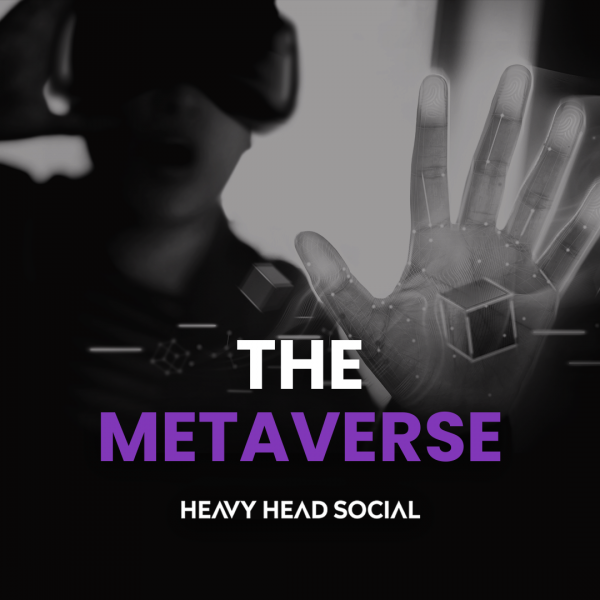If you’ve been paying attention to the (sometimes scary) technological advances in the world today then you’ve surely come across the term “metaverse”. it’s safe to say that this concept or idea has gained so much traction that Facebook has decided to call itself Meta.
As a result, you may have also encountered stories about how billionaires are buying yachts and mansions in said metaverse, and are planning for a future completely distanced from reality.
But is this true? Is the metaverse the starting point for a life lived within a virtual or augmented reality like Ready Player One or even The Matrix when the metaverse becomes self-aware and inevitably enslaves humanity for good?
Well, not quite…yet.
Defining the Metaverse
The truth is that many of us don’t have a concrete definition of what the metaverse really is.
It could be a marketplace where people buy real-world items like clothes and houses with NFTs and other digital currency, only they’re virtual and only exist in the metaverse, or it could be the way that people interact in the future.
Interact how?
For example, your next job could be in the metaverse, if the technology gets there, where you’re sat in an open-plan office interacting with your colleagues from the comfort of your bed.
Or, it could simply be a more interactive version of Fortnite, whose creator Epic Games has already announced $1 billion in funding to support their vision of the metaverse, that already allows people to wear VR headsets.
The truth is that we don’t know. The metaverse could, realistically, be a combination of all of these things much like the internet serves the needs of different people.
So, for now, it’s easier to just understand the metaverse as something new that brands are taking seriously because of the potential of making money without really having any tangible products…
The simulated reality of the metaverse
This has been coming for a while, even before 1981. However, back in 1981, which is surprisingly further back in the past than it should be, the French philosopher, sociologist and cultural theorist Jean Baudrillard, posited his idea of simulation and simulacra.
To summarise:
“Simulacra are copies that depict things that either had no reality to begin with, or that no longer have an original… Simulation is the imitation of the operation of a real-world process or system over time.”
This phenomenon has been going on for a while and social media such as Facebook and especially Instagram and TikTok, with their filtered and edited depiction of reality, has only heightened this.
Now, the metaverse (if you believe the hype) has the potential to create a hyperreality that is a simulation of the real world filled with simulacra that heighten the “online” or “virtual” experience to the point where it feels like you actually exist in that world.
The question is – is the metaverse already here? There are loads of games that offer this exact experience so what makes it different? That you can own your own house and live like one of your The Sims characters? Only you’re inside of the computer making your own independent choices?
All we do know is that brands and marketers, even if they also aren’t really sure of what the metaverse is, are keeping a close eye on how it’s progressing.

Advertising in the Metaverse
Advertising in the online and virtual world, inside of apps and on websites that you visit based on your behaviour is not something new to many of us.
We encounter this sort of advertising each and every day, without even realising it, and so it’s expected that if this metaverse becomes the 3D, virtual experience that we expect it to become, that advertising will inevitably be a part of it.
This includes everything from product placement and promoting an artist’s new album to advertising an online store’s Black Friday and general lead magnets to increase engagement with said brand.
The metaverse will also offer possibilities for brands that have been hampered by updates such as Apple’s iOS 14.5.
Why?
For the metaverse to work seamlessly it would require, for example, the entire ecosystem of the metaverse needs to work without limitation.
For instance, someone on their PS5 playing with a virtual headset purchases a new skin from a game, or builds their avatar and plays multiple games where they accumulate clothing from Red Dead Redemption, GTA, FIFA, and Fortnite.
The same user should be able to move between PS5 and an iPad seamlessly and be able to use whatever clothes they have accumulated in their “wardrobe” in different games.
Going even further, the same person (or avatar) should be able to go get a coffee in the morning from the virtual Starbucks, work for the day then attend a virtual concert at night, dressed in whatever clothes they choose.
And if this is all possible, then it requires Apple, Microsoft and Sony products to all communicate with each other and share data for the entire metaverse to work.
Meaning more opportunities for advertisers and brands such as Facebook who are currently hamstrung by the recent updates.
To conclude, the question we have to ask ourselves is if the world is ready to adopt the metaverse or if it’ll simply be just another online world that people sometimes visit but don’t interact with to the extent where they’re technically the Sim version of themselves.
The possibilities are indeed endless but the technology isn’t there yet and needs to take a few more big steps before the metaverse really becomes something tangible that we can place a definition on.

